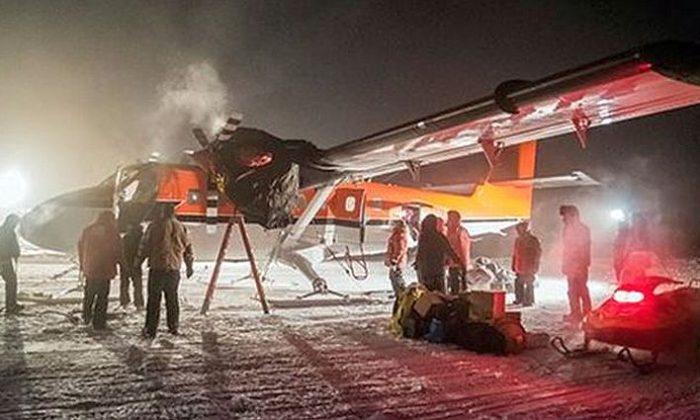A small plane picked up a sick worker and left the south pole on Wednesday during a dramatic rescue mission from a remote science outpost, federal officials said.
A Canadian-owned Twin Otter turboprop plane began the 1,500-mile flight from Rothera, a British station on the Antarctic peninsula, to a U.S-run base on the south pole., according to the National Science Foundation, which runs the station.

“The Twin Otter aircraft flying an Antarctic medical-evacuation mission has left the National Science Foundation’s Amundsen-Scott South Pole Station en route to the British Antarctic Survey’s Rothera Station,” the NSF said on Wednesday morning.
The NSF posted images of the Twin Otter taxiing on a snow-covered runway at the South Pole Station.
The sick patient and the crew—a pilot, co-pilot, flight engineer and medical worker—will take around 10 hours to fly to Rothera. Next, they will likely fly to South America to get medical attention that can’t be provided on the remote continent.

Planes don’t usually fly down to the polar outpost from February to October because of the dangers of flying in the cold, pitch-dark skies over Antarctica. On Wednesday, it was minus 75 degrees Fahrenheit at the South Pole, the station’s webcam said. The first day of winter in the Southern Hemisphere was on June 20.
But last week, the NSF decided to mount the rescue mission because a staff member needed urgent care. Earlier reports said that two people might need treatment.
The Twin Otters are operated by the Canadian airline Kenn Borek and left Calgary on June 14.

Michael Dinn, director of Operations for the British Antarctic Survey, explained the perilous nature of the rescue mission.
“It’s pitch-black right through the whole of the day, it has been for some months at the South Pole, and will continue to be,” he told the BBC. “It’s a combination of that—the temperature, the very inhospitable environment, and the fact it’s dark all the time.”
The mission is pushing the limits, said Tim Stockings, operations director at the British Antarctic Survey in London. “The air and Antarctica are unforgiving environments and punishes any slackness very hard,” Stockings told the National Post. “If you are complacent it will bite you.”
The first medical evacuation from the station was carried out in 1999 for a doctor diagnosed with an aggressive form of breast cancer. The first base at the Amundsen-Scott station was built in 1957, and it is used for research and features a powerful telescope.






Friends Read Free